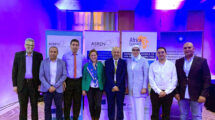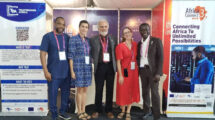This article was originally published on the UbuntuNet Alliance’s website.
In recent months, UbuntuNet Alliance in collaboration with RENATER, IRD and CIRAD with financial support from AFD have been collecting data about the development status of NRENs in Eastern and southern Africa. The results of the survey were presented at a hybrid workshop held at the side lines of RENATER’s annual conference, JRES 2022 held in Marseilles, France.
Of the 16 member NRENs of UbuntuNet Alliance, 10 NRENs responded to the survey providing valuable insights into the development status of NRENs in the region. The results show that NRENs in the 10 countries are providing connectivity to a combined 3.4 million students in 627 universities and colleges. On this, a major revelation was that 60% of the connected institutions are private and the remaining 40% are public universities and colleges. However, public universities account for a large majority of the internet bandwidth.
In terms of governance, the survey revealed that the majority (8 of 10 surveyed) of NRENs are non-profit entities, taking various legal entities depending on national laws. The other two are government entities. The survey showed that government NRENs do not have governance structures such as Boards or General Assemblies. On the other hand, non-profit NRENs that have two or three-tier governance structures, which ensure that community coherence.
The survey also looked at the connectedness of NRENs with key national infrastructures such as data centers, internet exchange points (IXP) and high-performance computing (HPC). Forty percent of surveyed NRENs connect to national data centers; 20% are connected to HPC; and 60% peer at local IXPs.
The survey also included a self-assessment exercise where NRENs mapped themselves against a 4 stage Maturity Matrix that looks at Governance, Business Model, Infrastructure/Technical Services, Services for Users, and Human Resources. The stages are Creation, Maturation, Development and Growth.
The results of the maturity Matrix showed that most of the developing NRENs lie in the first two stages of Creation and Maturation, whereas the developed ones lie in development and growth, thereby creating a divide between the two groups. As an output of the discussion at the workshop, the NRENs agreed to help each other to pull all NRENs in the creation and Maturation stages to move to Development and Growth stages.
The NREN Maturity Matrix has been seen a major yardstick for measuring NREN maturity. It builds on the NREN Capability Maturity Model originally developed by Duncan Greaves in 2008 and popularised by Michael Foley in the World Bank commissioned report on The Role and Status of National Research and Education Networks in Africa published in 2016.
The dissemination workshop was attended by representatives from AFD, European Union, World Bank, GEANT, WACREN, UbuntuNet Alliance and NRENs of Eastern and Southern Africa.
The NREN Development Survey looked at various aspects of an NREN including organisation, budget, users, infrastructure, and services. A full report will be published in September 2022.





